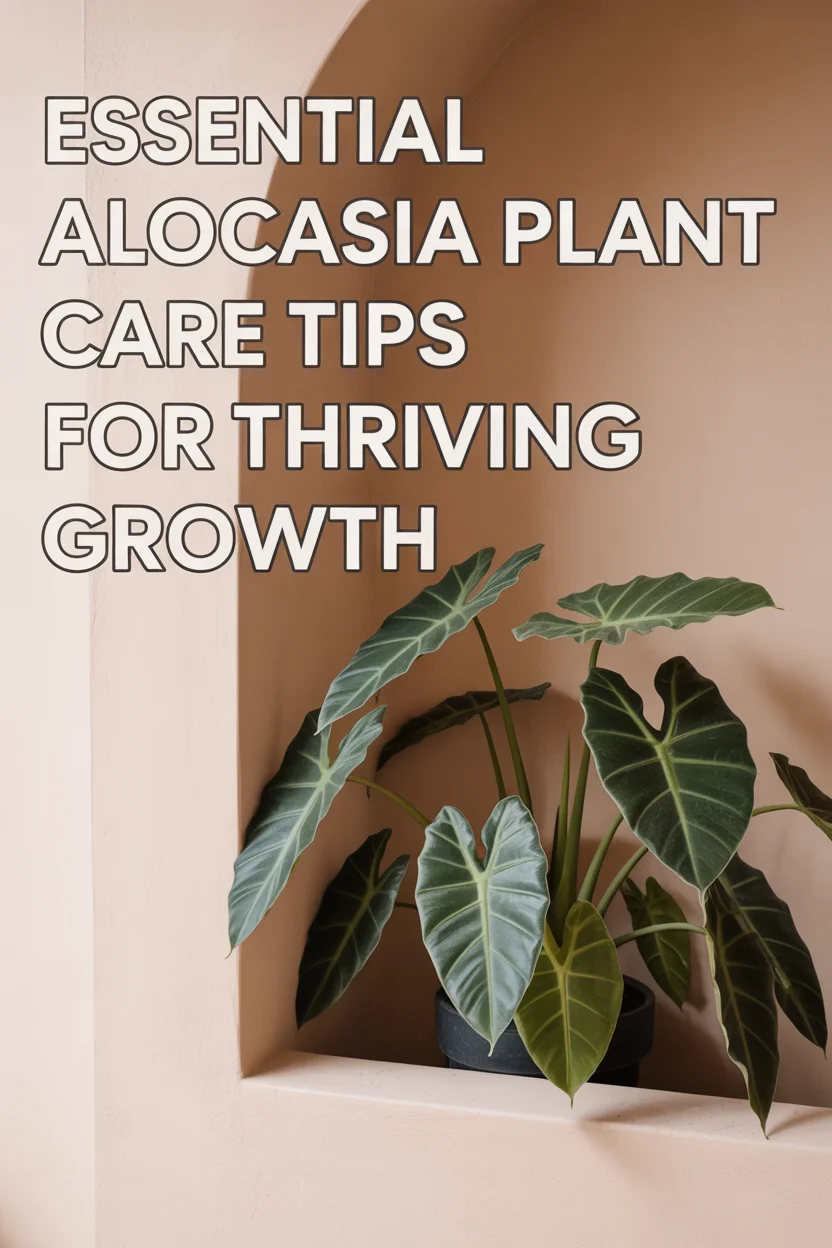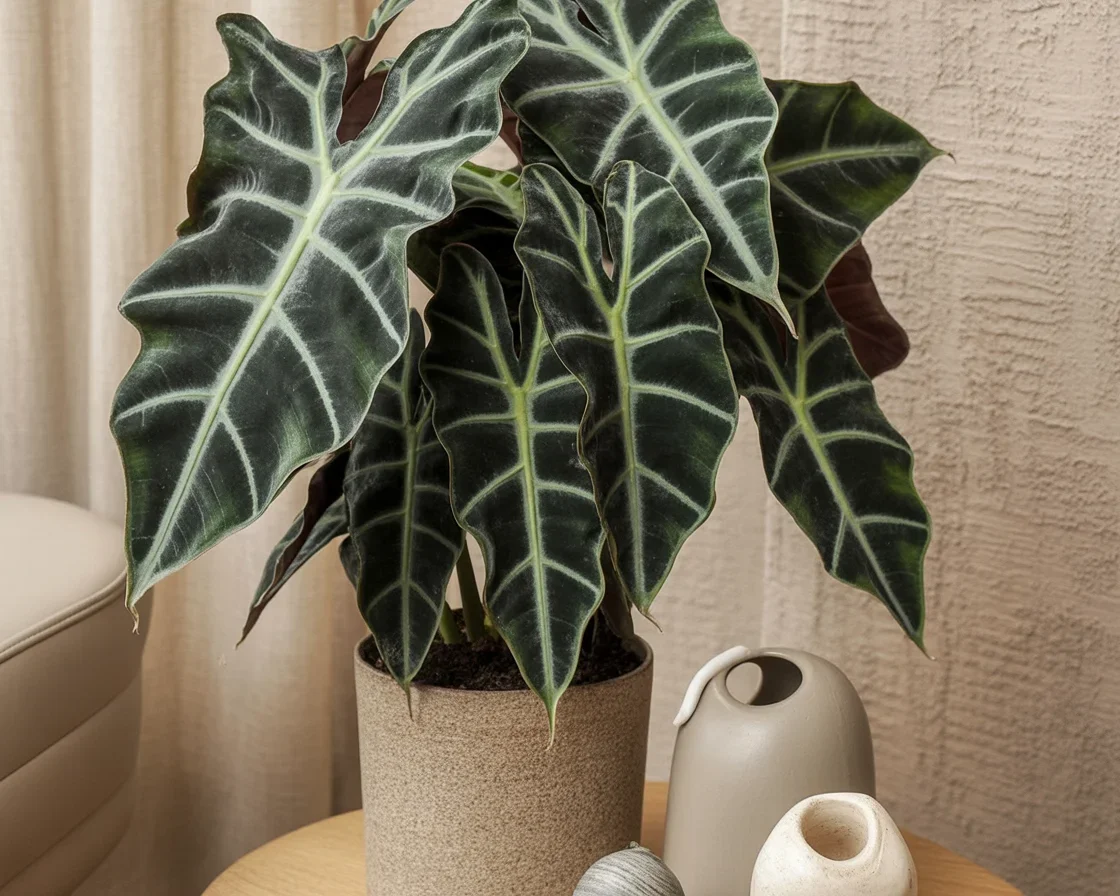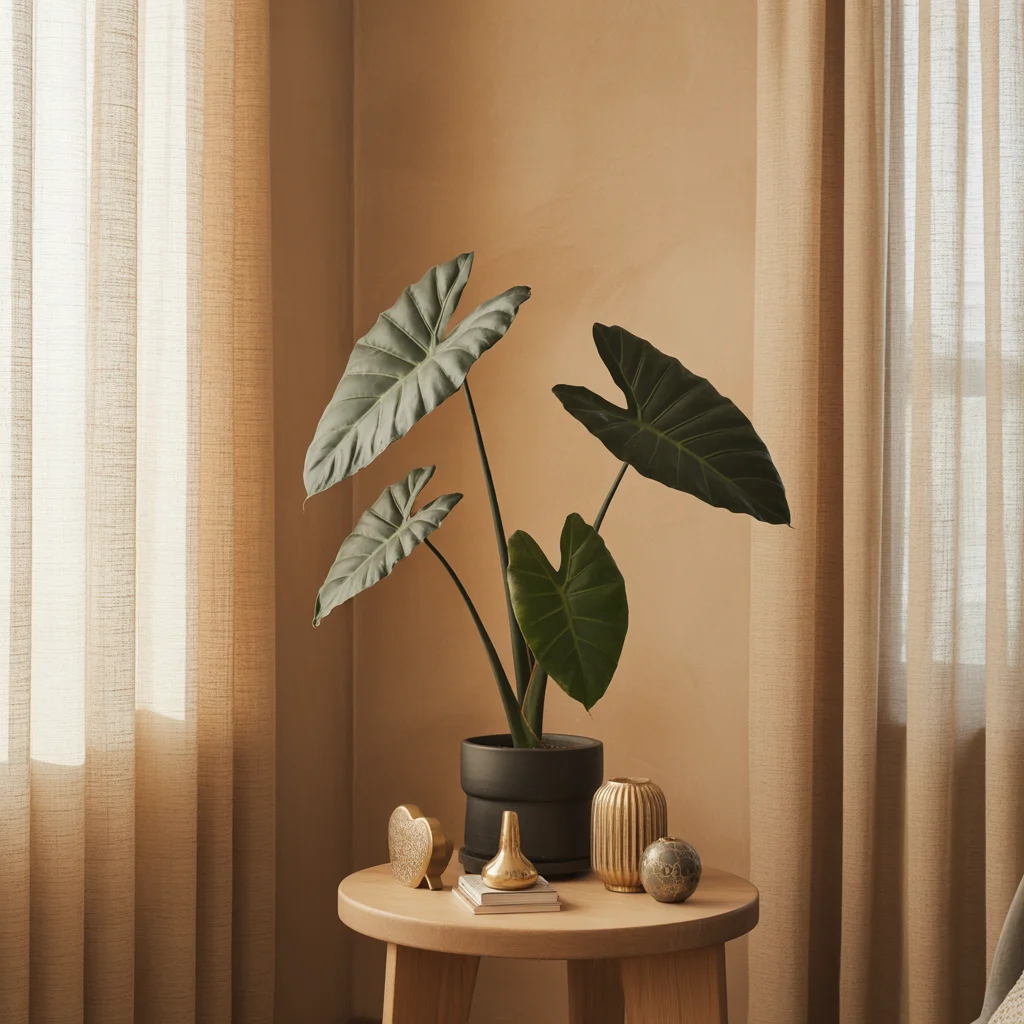Ever get that feeling your ALOCASIA Plant Care routine is like herding cats? You’re not alone. You love those bold, wild leaves, but suddenly your precious jungle buddy droops, gets crispy edges, or just sits there like a stubborn potato. Maybe you even start second-guessing—should you have picked something easier, like a pothos? (By the way, here’s a super friendly guide if you’re ever curious: friendly guide to pothos plant care.) But listen, with the right know-how, Alocasias absolutely thrive, and trust me, it’s worth those few tricky moments. If you want to fall in love with all the crazy styles they can come in, check out these Alocasia plant varieties worth swooning over—it’s drool-worthy plant eye-candy. Alright, let’s do this together.
Table of Contents
Alocasia Plant Care & Planting
So, story time: I used to think sticking my Alocasia in any dusty corner would do. Boy, was I wrong. These guys are drama queens when it comes to their home. You need well-draining soil—think soil that feels like fluffy cake, not a mucky swamp. I always start with a chunky peat-based mix, even toss in a handful of bark if I’m really feeling fancy.
Watering, now, is weirdly specific. You want the soil barely moist, never soggy. Overdo it and the roots will just wave the white flag. Also, containers with drainage holes aren’t optional. If you want to get creative outdoors, make sure your spot gets a taste of morning sun but chills in dappled shade by afternoon. Super important, or the leaves might burn like last year’s toast.
Honestly, learning this stuff by trial and error led to a couple casualties (RIP to my first emerald beauty), but getting the basics right is like finding out your favorite recipe’s secret sauce.
How do you care for Alocasia indoors
Indoor Alocasia life is kind of like babysitting a restless toddler. You can’t just put it down and hope for the best. Position it where natural light pours in, but avoid windows that get scorching midday sun. That’s a fast track to leaf-fry. I move mine around a lot—chasing the Goldilocks “just right” window.
Humidity’s the other kicker. My house is dry as popcorn, but a humidifier or even a damp pebble tray does the trick. Heck, sometimes I even give mine a steamy shower (not as weird as it sounds). Wipe down those leaves, too. Dust makes them sad. If you want to geek out with similar leafy friends, check this China Doll plant care guide—the drama is uncannily similar.
Confession: There was a season I ignored my Alocasia and I swear it staged a revolt. So, yeah, a little attention goes a long way. 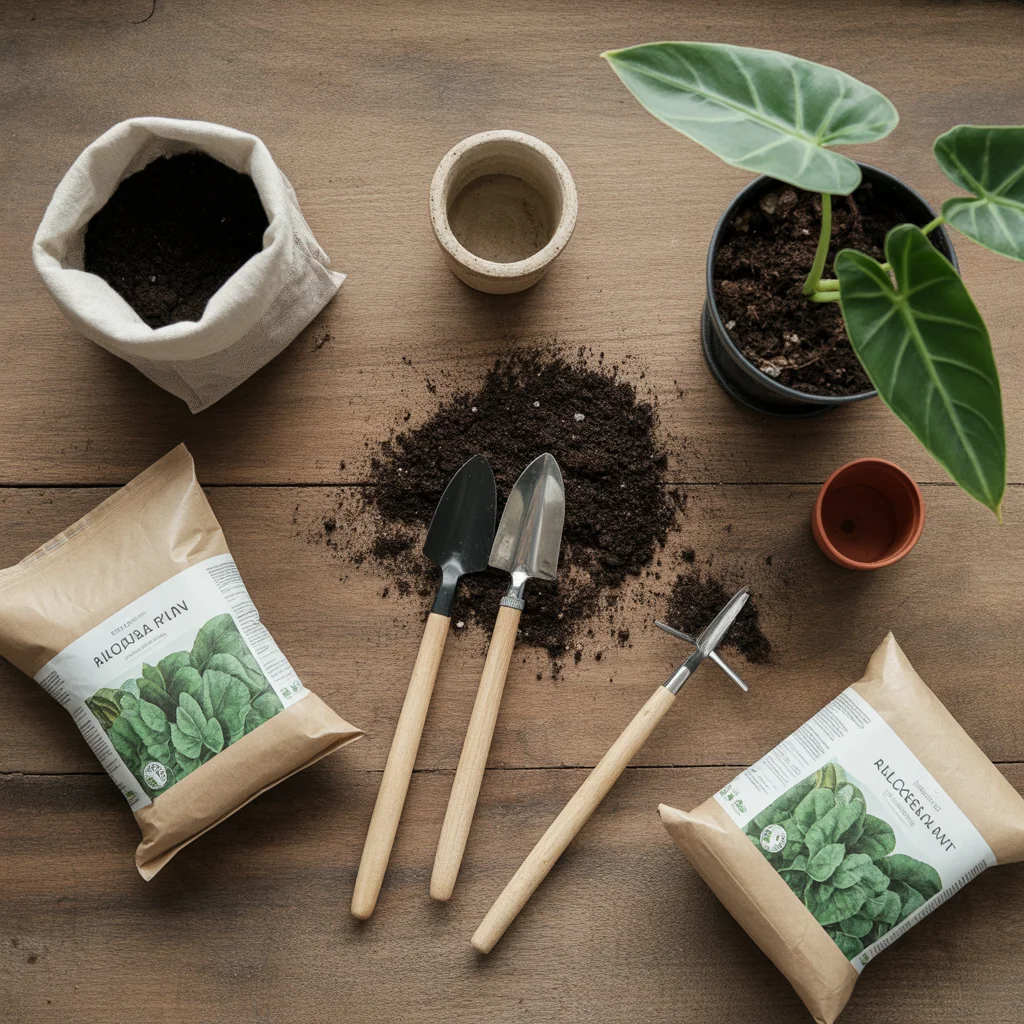
Top 5 Steps to Growing a Alocasia
Alright, brain dump time—here are my quick-fire steps when someone panics about Alocasia drama:
- Use light, well-aerated soil. No dense clay nonsense.
- Find a spot with bright, indirect light. Harsh sun is the enemy.
- Keep humidity high. Target above 50 percent for happy leaves.
- Water just enough to moisten, never saturate the soil.
- Feed your plant with diluted fertilizer in warmer months.
Sometimes I even stick a sticky note on my watering can so I don’t forget these (no shame). These steps are simple, but weirdly, skipping one can make for a grumpy plant. 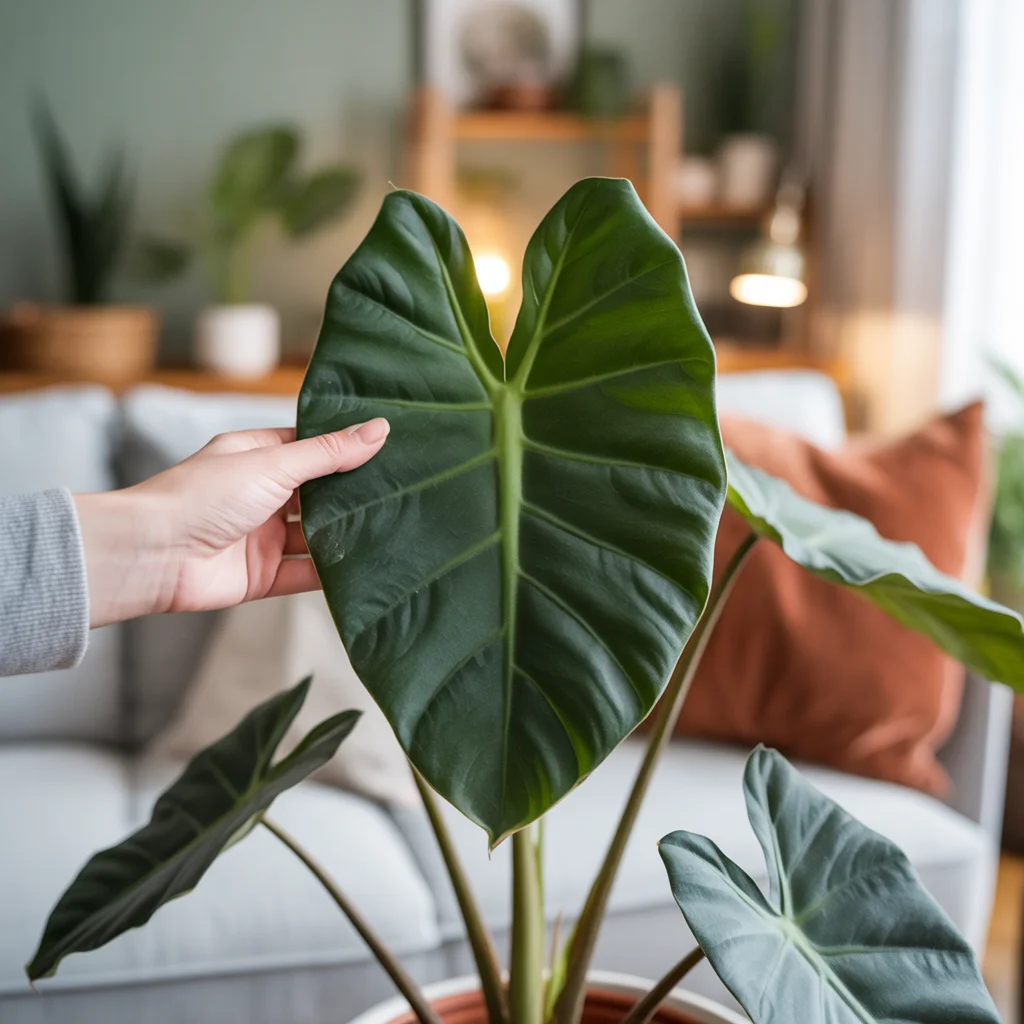
Growing in a Pot
Potted Alocasias bring some perks. They’re moveable—you can chase that perfect sun, which I doubt I’m the only one doing. Pots must have drainage holes. No arguing here. Line the bottom with chunky stones if you want, but honestly, just don’t use a pot without holes or you’ll have swamp foot problems.
Every year or two, your Alocasia might need a new, bigger pot. When roots poke out the bottom or it just looks stuffed, repot in the spring. And, pro-tip, don’t bury the stem like you’re packing a snowball. Roots want space, not smothering. If you want even more tips on weird plant pots and their needs, here’s how I got lost in the easy aloe vera care world—and learned a thing or two about drainage by accident.
Growing in the Garden
Outside, Alocasias can be the crown jewel of your green space. They need protection—think tall trees or fences blocking afternoon glare, like a secret garden, not an open field. Enrich your garden soil with compost and mulch, and never let water pool up around their feet (soggy roots mean disaster-level leaf drop).
Oh, and depending where you live, winter’s not their friend. If you see frost on your lawn, dig your Alocasia up and overwinter inside. Call me dramatic, but I treat mine like a VIP—pampered and fussed over when the weather dips. That reward in spring, though!
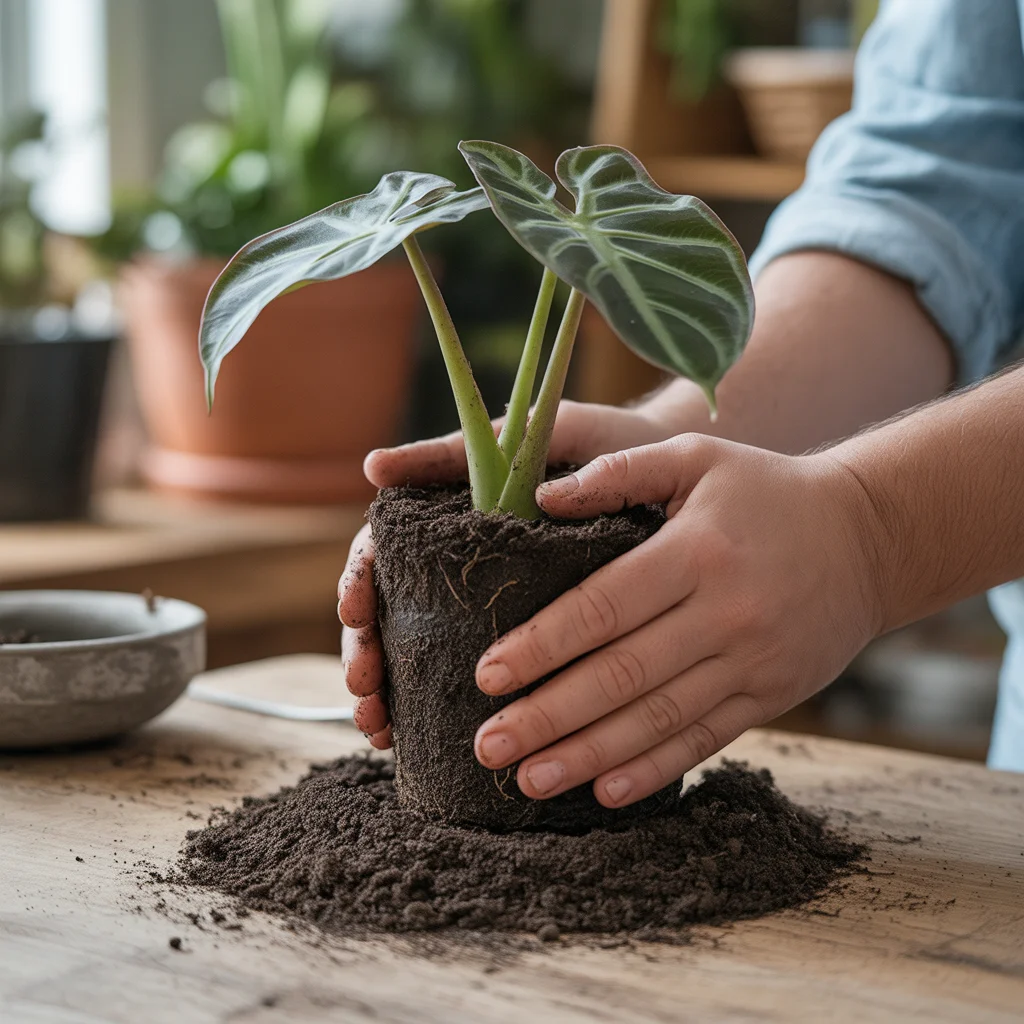
Pests & Diseases
You’re not the only one who wants a bite of your Alocasia. Spider mites, mealybugs, and aphids—they find these guys like bees to honey. Don’t panic if you spot a bug. Blast them off with water, wipe the leaves with soapy solution, or use neem oil. You’ll feel like a plant ninja.
Root rot is a classic rookie mistake. Overwatering, or having that infamous “pool in the pot” situation, will bring rot faster than you can say yikes. Treat by snipping off the mushy roots and maybe even starting fresh. Honestly, I’ve been there. Kinda gross, not gonna lie, but better than losing the whole plant.
“I followed these pest tricks and now my Alocasia looks better than my neighbor’s—no pests, giant leaves, seriously, I get compliments all the time!” — Sam, fellow plant fanatic
How often do you water Alocasia?
This is the number one trick nobody told me: let the top inch of soil dry before adding more water. Stick your finger in—if it’s still damp, walk away. More Alocasias have been drowned than dried out, promise. Watering schedules change with the seasons, too. My Alocasia is a thirsty beast in summer, then hits snooze when it’s cold. Go easy. And, water from the bottom every once in a while—so cool watching the roots slurp it up.
Does Alocasia need a lot of sunlight?
Nope, and kind of yes? They want lots of light, but not super hot direct sun. If your Alocasia’s leaves are getting faded or crunchy, it’s crying for help—maybe it’s too sunny or not enough. I keep mine in east-facing windows, and honestly sometimes I plop it in dappled shade under a big old fern. Happy as can be.
If you’re ever dealing with too much or too little light and need backup, check this easy tips thriving elephant ear plant care home post. Similar vibes, and lots of relatable head-scratching solved.
Common Questions about ALOCASIA Plant Care
Q: Can I grow my Alocasia outside all year?
A: Only if you live somewhere tropical. Otherwise, prep a cozy indoor spot before first frost.
Q: Why are my leaves turning yellow?
A: Usually too much water, but sometimes not enough sun. Double-check both.
Q: Can I split my Alocasia?
A: Yes! Use a sharp knife and make sure each chunk has roots. It’s messy but pretty easy.
Q: Do I have to feed it fertilizer?
A: It’ll grow better if you do, especially in growing months, but always go light—a little goes a long way.
Q: Is it poisonous to pets or kids?
A: Yes, actually. Keep it away from chew-happy cats or little ones.
Ready to Watch Your Alocasia Shine?
To wrap it up, don’t let ALOCASIA Plant Care trip you up—everyone makes blunders (truly, everyone). Follow these main tips, show your plant a little love, and it’ll thank you with gigantic, Instagram-worthy leaves. If you want a deep dive into rare varieties or have your heart set on that velvet look, here’s a fantastic guide on Alocasia Melo care and maturity. Curious to explore more? Try the prayer plant care guide for beginners, or get inspired by 10 blooming indoor house plants to brighten your space. Don’t sweat the small stuff—just give it your best and watch your indoor jungle come alive. You got this! 